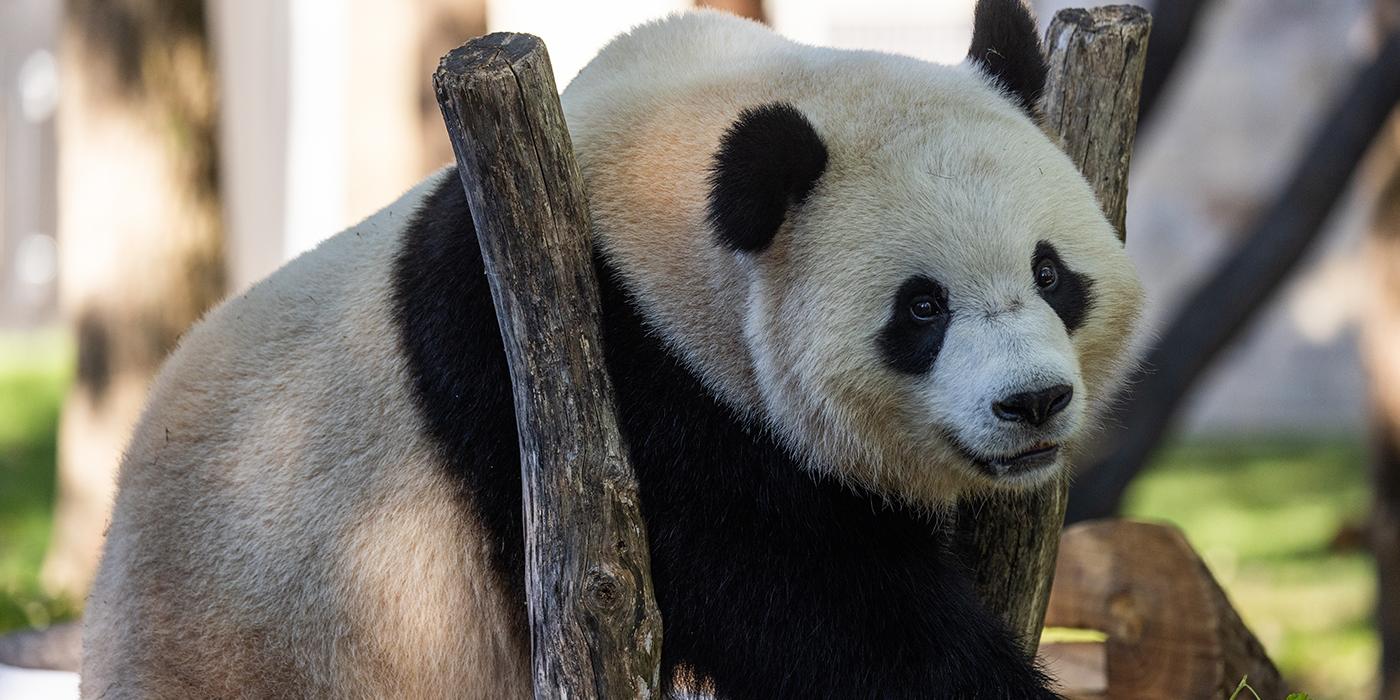A Day in the Life of a Giant Panda Keeper
6:30 a.m.
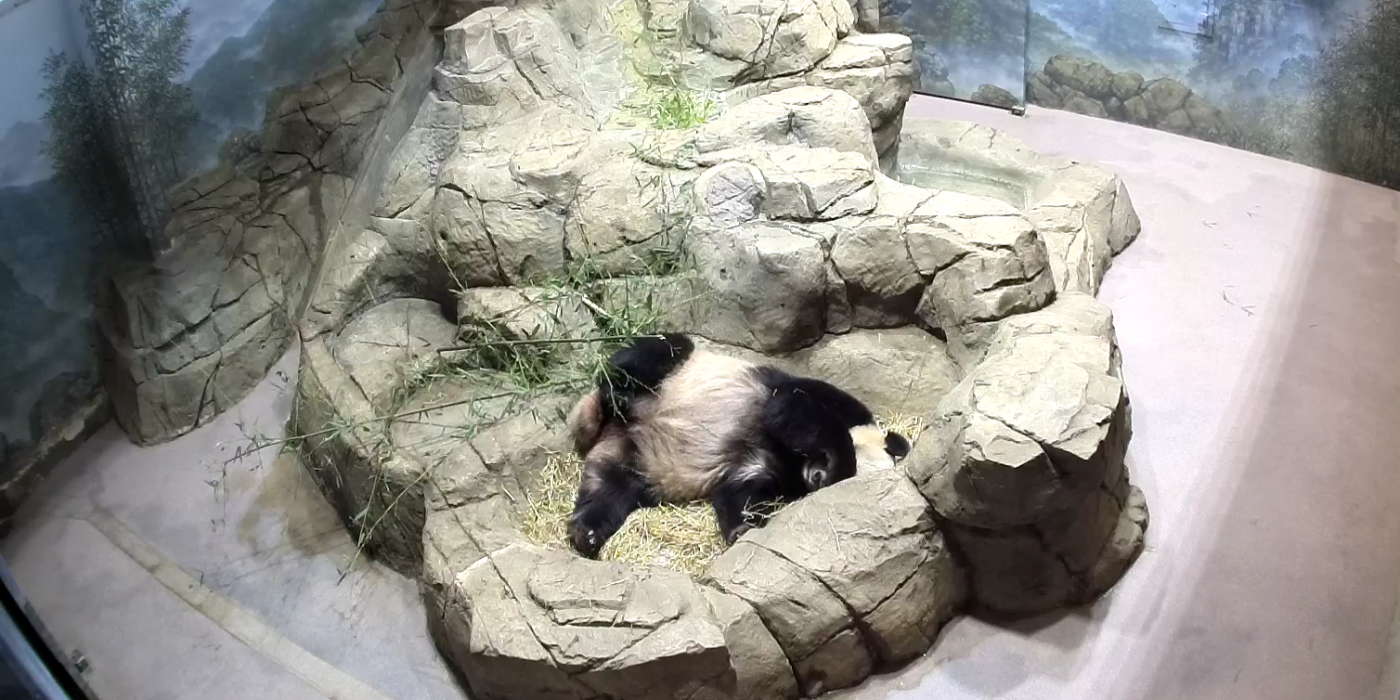
Our day begins at the David M. Rubenstein Family giant panda habitat, and we start our morning by getting a visual on all of the bears. We want to ensure that Mei Xiang, Tian Tian and Bei Bei appear to be healthy, active and moving about as normal. By the time we arrive, most days the pandas are already starting to wake up, although Bei Bei has been known to snooze in his hammock for a few extra minutes some mornings!
7 a.m.
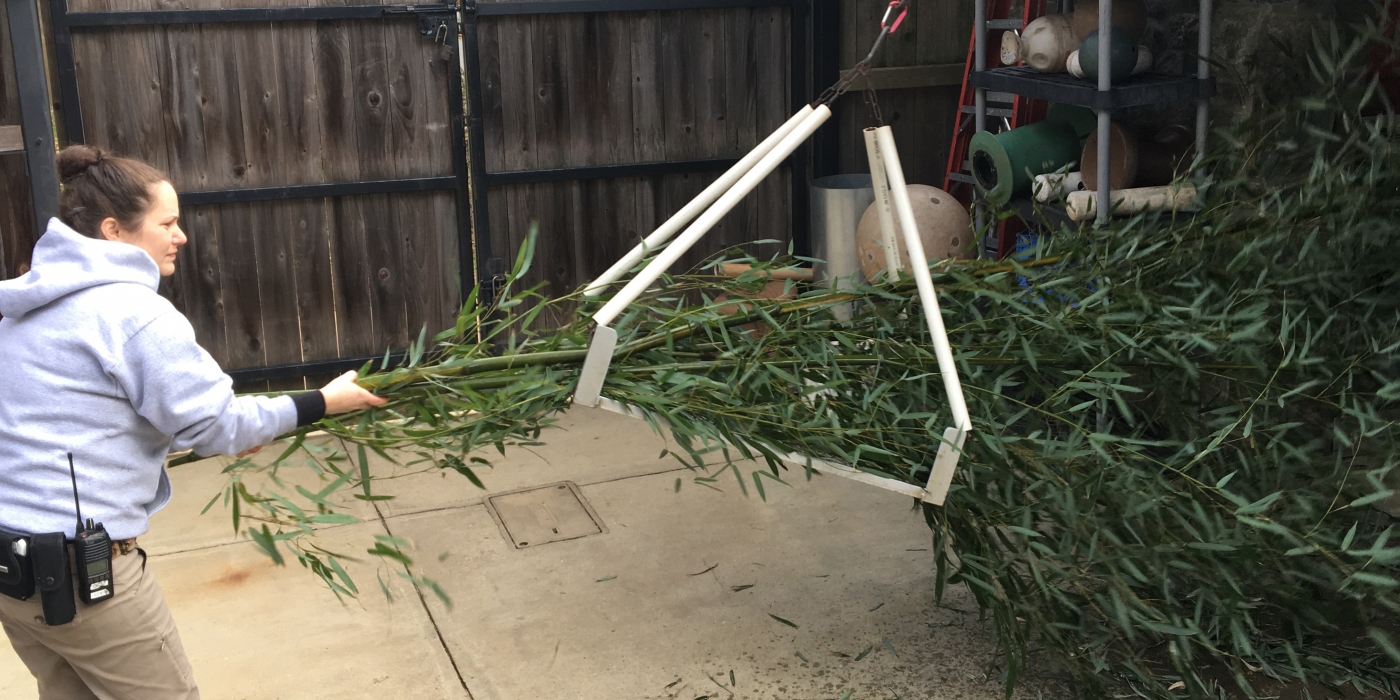
Following our morning checks, we start weighing out bamboo for the pandas’ breakfast — about 15 pounds per bear.
7:15 a.m.

Giant pandas spend between 10 and 16 hours a day foraging and eating, so in addition to the bamboo, we will often offer them a combinations of fruits, vegetables or fibrous leaf-eater biscuits hidden inside puzzle feeder enrichment to make mealtime interesting. Not only does this help the bears keep physically active—they have to explore the yard to find where we’ve hidden the enrichment—but also mentally sharp, since it takes a bit of brain power to figure out just the right angles for manipulating the feeders to get the treats out. One of Bei Bei’s favorite toys is the Nose-It feeder, pictured above.
7:20 a.m.

Another way we encourage our pandas to keep mentally and physically active is through our husbandry training program. Positive reinforcement and operant conditioning training techniques are used throughout the Zoo to give our animals the opportunity to voluntarily participate in their own care and receive a reward for doing so. The same is true for giant pandas.
Although we never share the same space as the adult giant pandas, we easily and routinely interact with them through the mesh in their enclosures. Most mornings, we do a quick training session with Bei Bei to practice behaviors he has already mastered. This can involve asking for simple behaviors—opening his mouth or presenting different body parts for inspection—or climbing upon a scale and stationing (holding still) for a weekly check of his weight.
For every correct behavior, Bei Bei is rewarded with a favorite treat and an enthusiastic ‘good job!’ from the keeper who is working with him. On days when our veterinary team is due to collect a blood sample, they typically stop by first thing in the morning as well.
7:30 a.m.
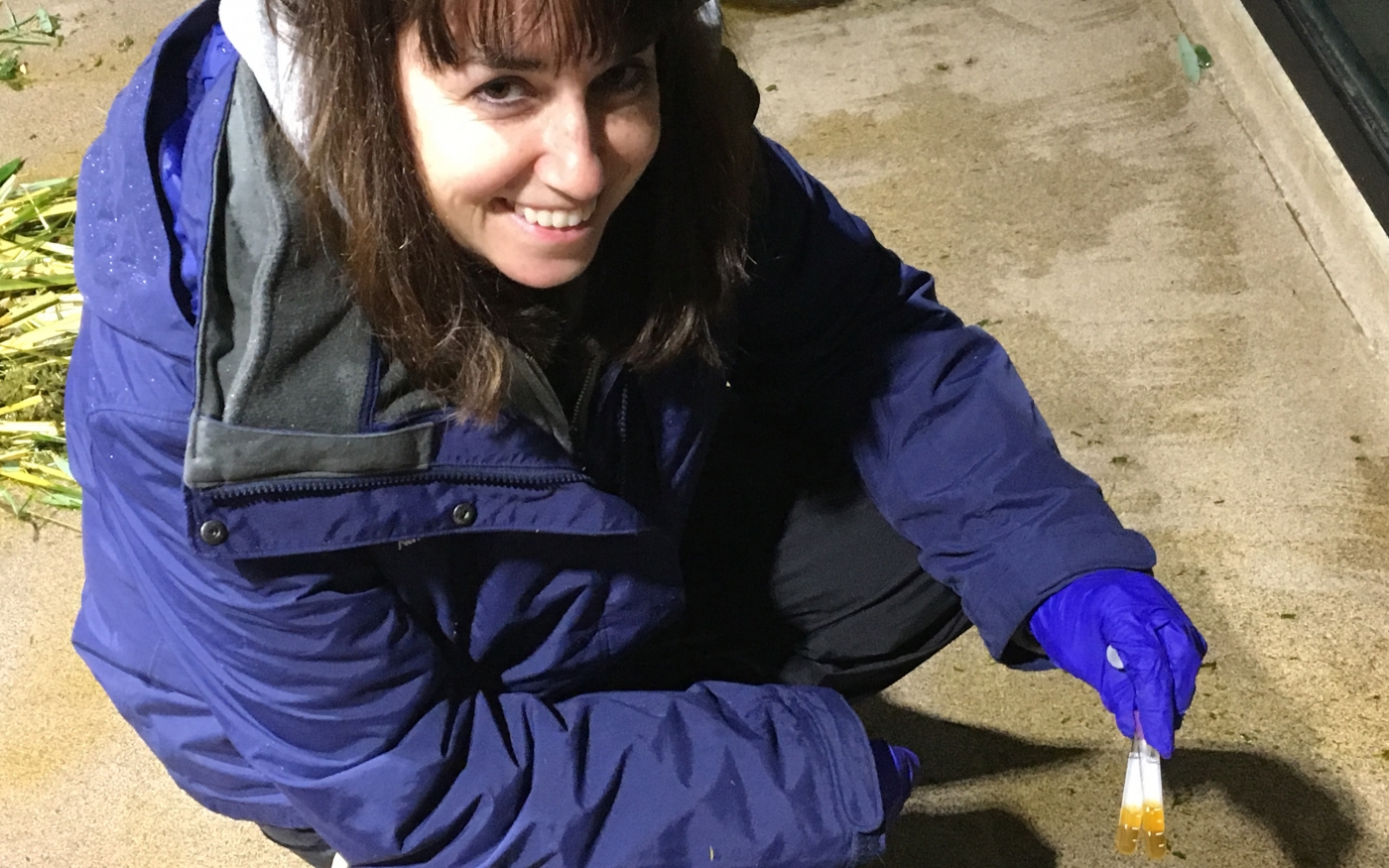
Once enrichment has been placed in the yards and the training session completed, we shift Mei Xiang, Tian Tian and Bei Bei into their outdoor yards for their big bamboo breakfast. While they eat, keepers get to work cleaning their indoor enclosures. Depending on how messy the bears were overnight and how many hands we have to help, getting the enclosures ready can take up to two hours.
A large component of our giant panda program is research, and one way our Smithsonian Conservation Biology Institute scientists study our pandas is by using non-invasive techniques—i.e. by looking at hormones in their urine and feces.
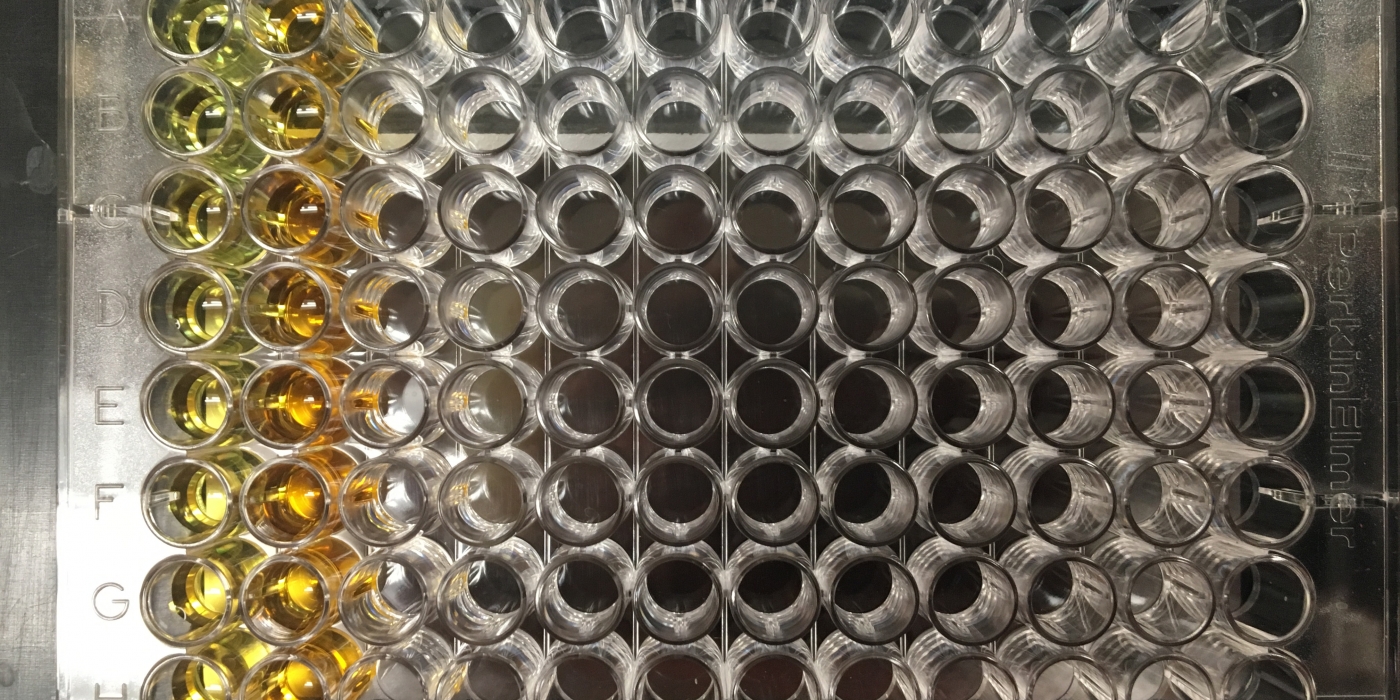
Giant panda urine samples ready for analysis in the Zoo's endocrine lab.
Once we have collected samples and label them for the lab, we clean the entire enclosure, top to bottom. We discard any uneaten bamboo, drain the pools and clean and disinfect the floors, rockwork and water features as needed. Once hosing is complete, we squeegee any standing water on the floors and windows.
9 a.m.
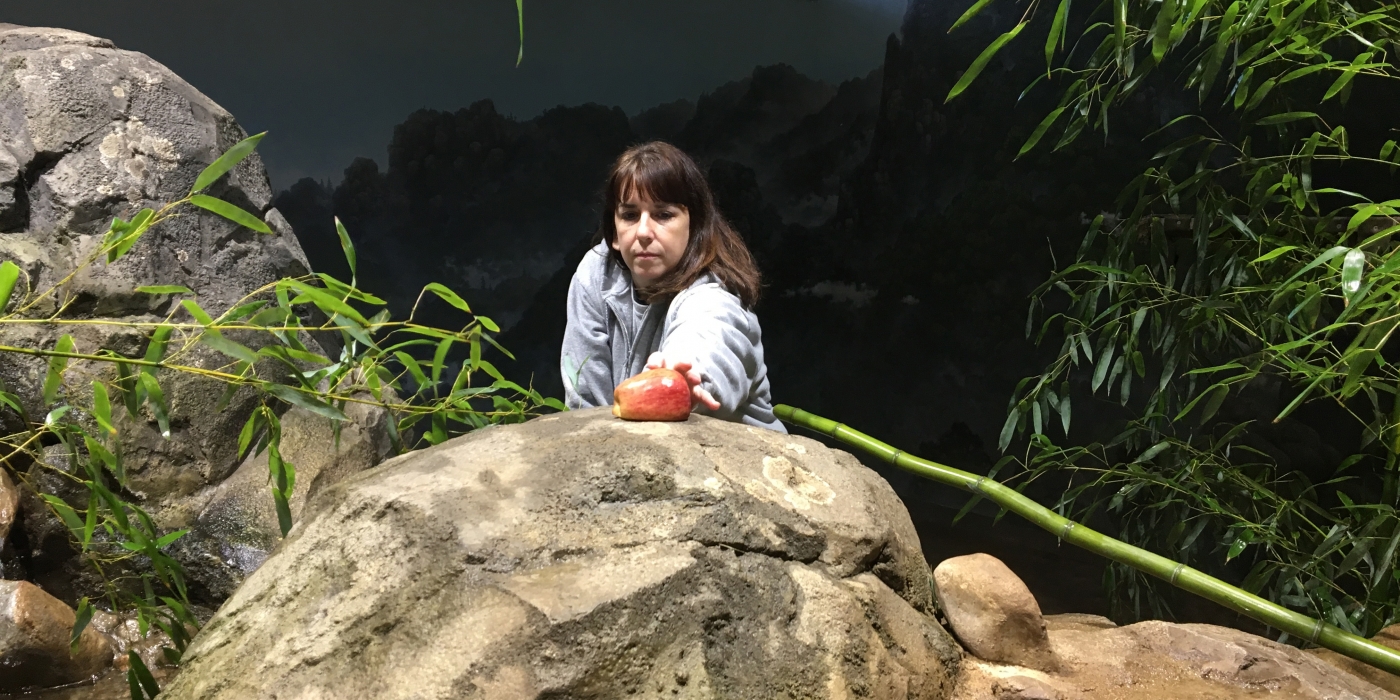
By the time the building opens to visitors, keepers are putting the finishing touches on the indoor enclosures. We add fresh bamboo, different kinds of puzzle feeders and other enrichment items. One of the enrichment items we frequently put in Bei Bei’s enclosure is a large rubber tub. He seems to enjoy sitting in it to eat his bamboo! While the pandas eat inside, we take the opportunity to replenish the bamboo supply as well as the feeders in the yards.
10 a.m.

For most of the day, our pandas can choose whether they want to spend time inside or outside, and can move back and forth between their enclosures. Once all have eaten their fill of morning bamboo, it’s time for their late morning nap. Each panda finds his or her favorite napping spot—Bei Bei almost always chooses his indoor hammock.
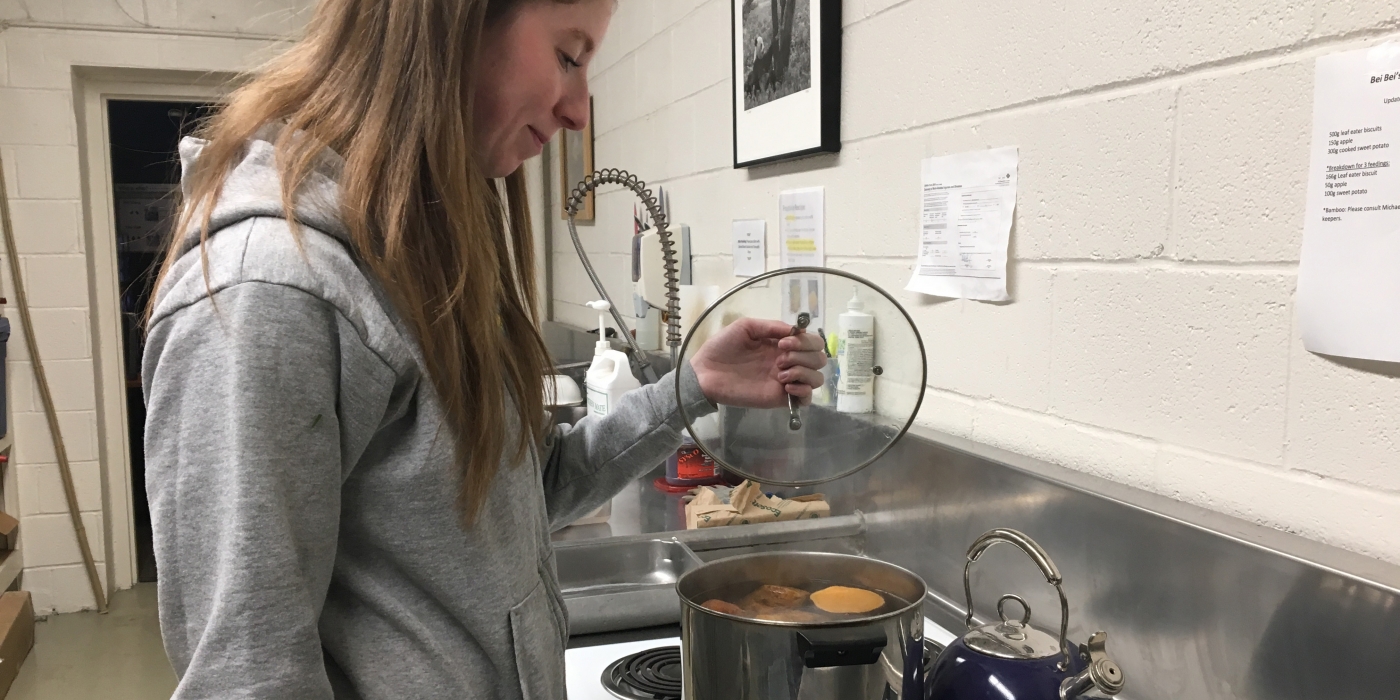
While the bears are asleep, we are busy behind the scenes preparing diets for the following day, cooking sweet potatoes and making some fruitsicles — frozen, bear-sized popsicles made from dilute juice and/or fruit.
11 a.m.
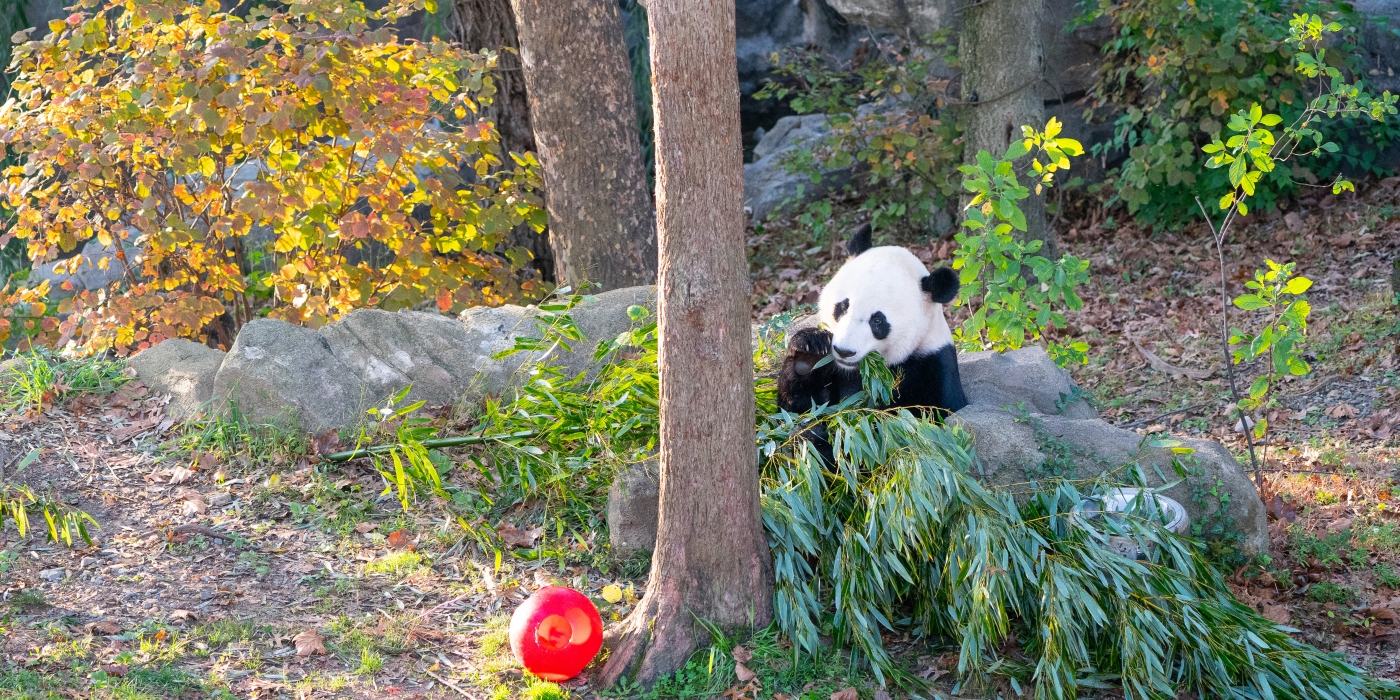
By the time late morning rolls around, the pandas are ready for their mid-morning snack. It is around this time when we give our keeper talks and teach visitors about the behavior and biology of giant pandas and the personalities of our bears here at the Zoo.
We monitor the pandas throughout the day and look at their behavioral cues to determine if they are content, or if they need additional bamboo feedings and enrichment. Some days, the pandas nap straight through the morning and into early afternoon. Other days, they require additional feedings.
We make note of all these things in our daily report, which is helpful for tracking their behavioral patterns. That way, if they are displaying behaviors that are out of the ordinary, we will alert our veterinary team.
1:30 p.m.
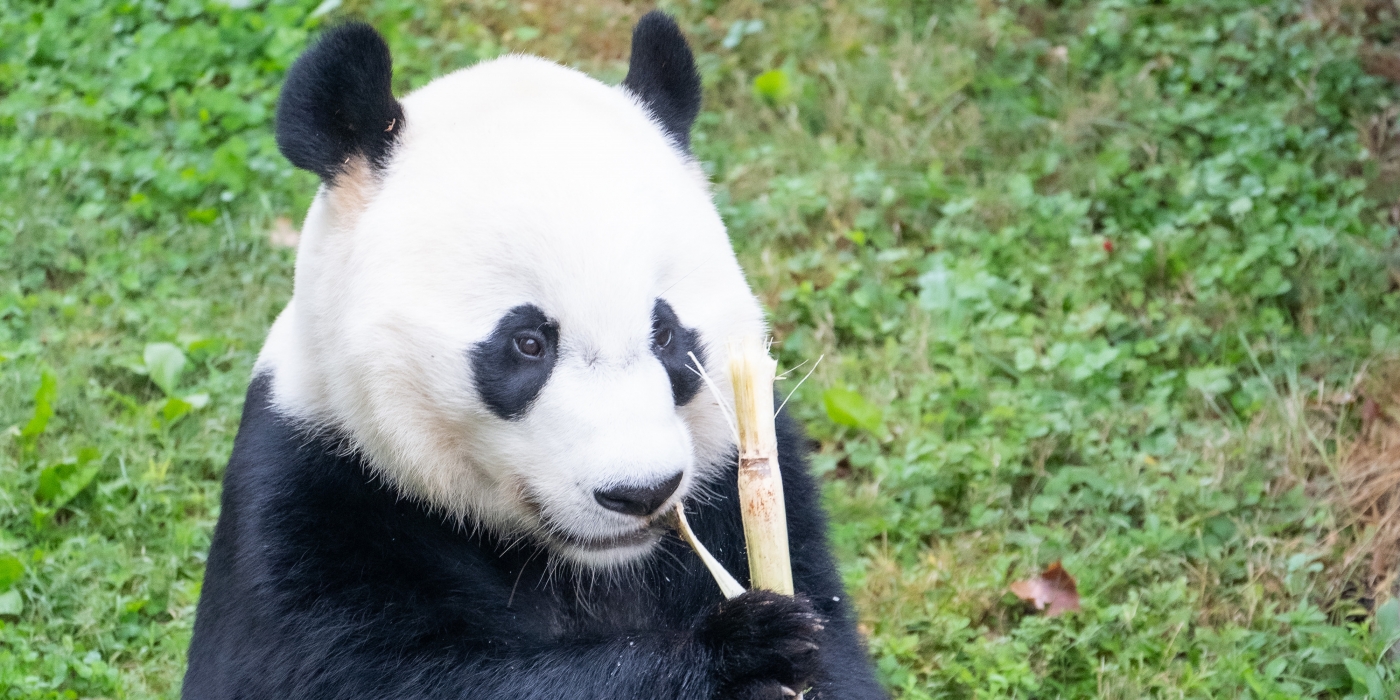
It’s time for afternoon enrichment! Some of Bei Bei’s favorite treats are fruitsicles and sugar cane. In autumn, he also really enjoys corn stalks.
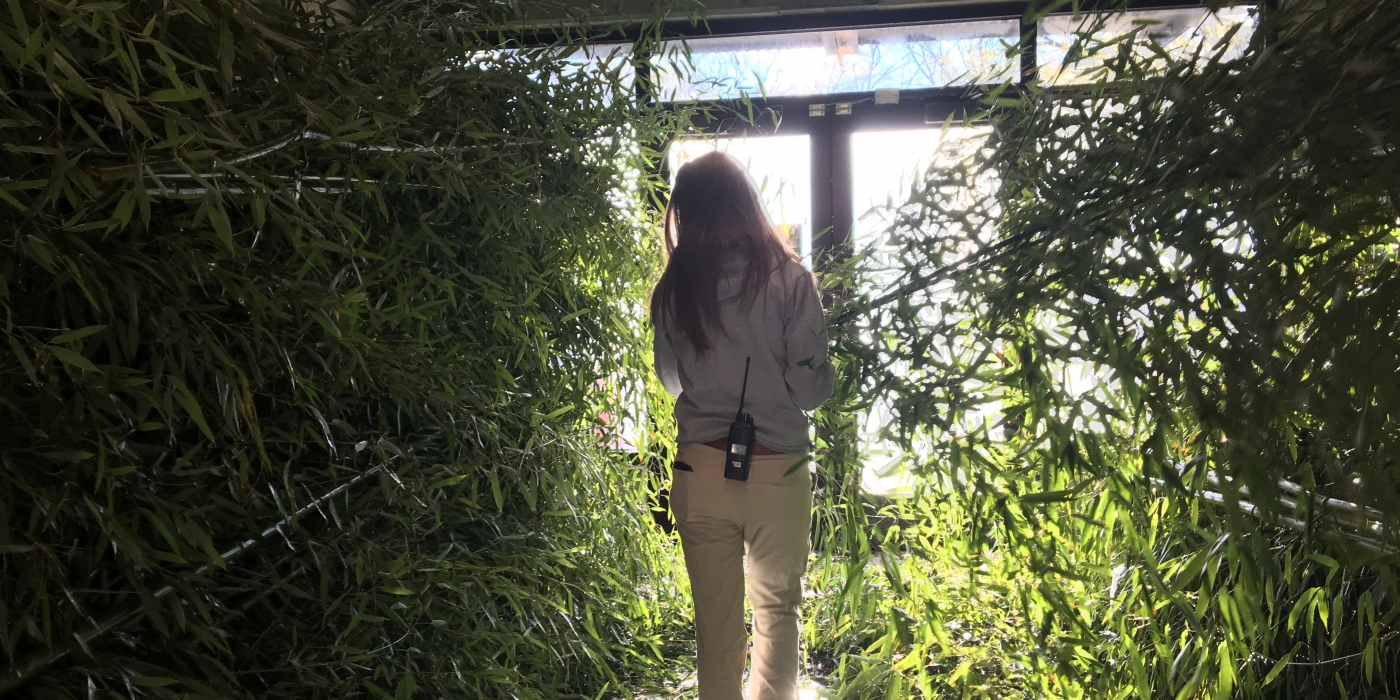
While the pandas are occupied with their toys and treats, keepers make our way over to the bamboo shed to weigh the overnight bamboo and get their indoor enclosures ready for the end of the day.
2 p.m.
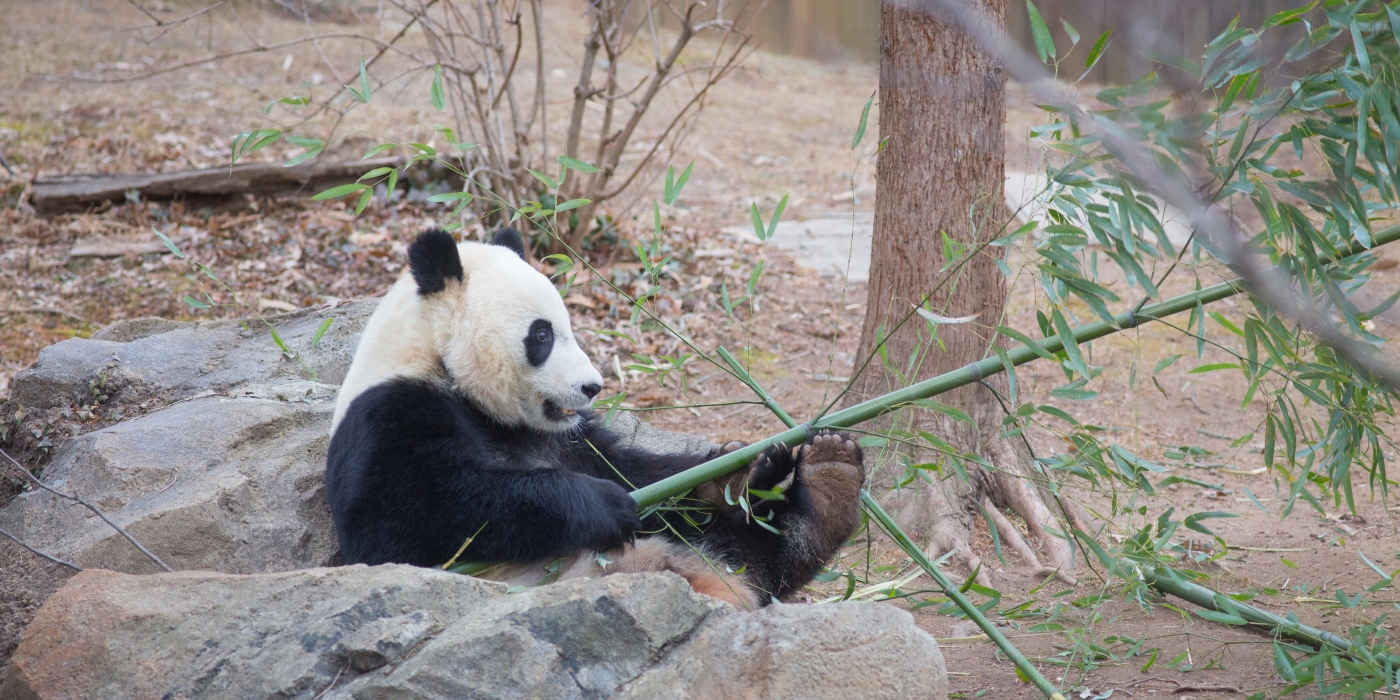
By mid-afternoon, it’s time for all three pandas to shift indoors for the night. Typically, Tian Tian and Mei Xiang are quite eager to come inside, but Bei Bei takes a little longer to savor his enrichment outdoors.
3 p.m.
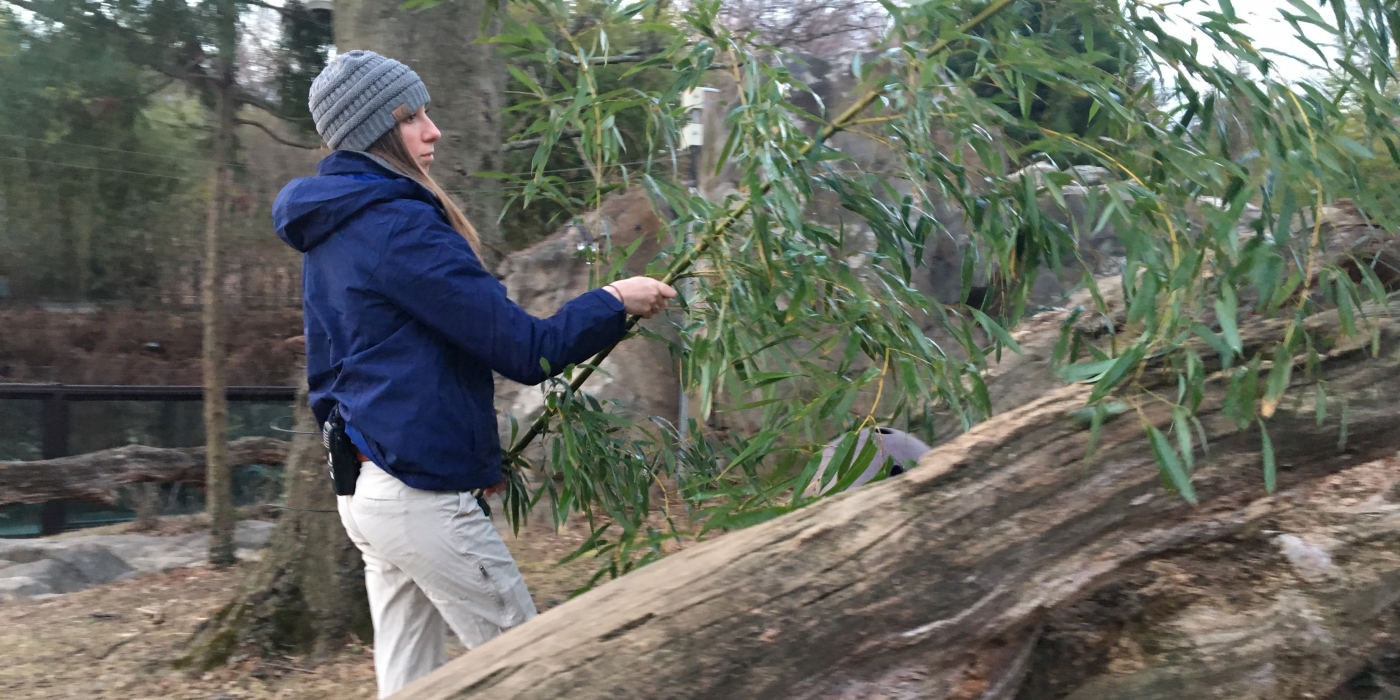
With all of the pandas safely secured inside, keepers do one last round of yard checks and cleaning before heading home for the day.
This article was featured in the special “Bye Bye, Bei Bei” issue of National Zoo News.
Related Species:



